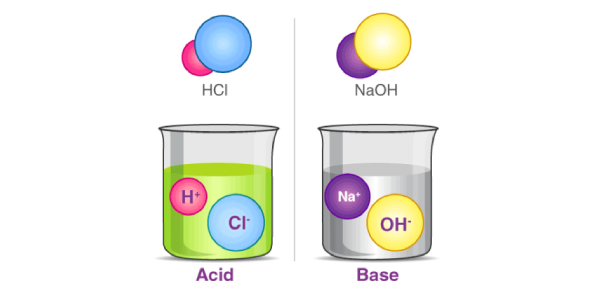We consume a variety of food items in our everyday lives, including lemon, baking soda, table salt, sugar, yogurt, and vinegar. Some of these compounds have a sour flavor, while others are bitter, sweet, or salty.
Acids, bases, and salts are three major classes of chemical chemicals that we consume in a variety of ways. Certain acids, bases, and salts exist naturally and may also be synthesized chemically in factories.
How to identify the presence of acid in a food?
When food substances have a sour flavor, they include acid. Compounds that contain acid are called acidic compounds and the acids in these compounds are derived from natural acids.
More about acids and their features.
Acid is derived from the Latin word 'acidus', which means 'sour'. As a result, all sour substances are fundamentally acidic. Lemon juice, citrus fruits, unripe mango, and curd all have a sour flavor. They have a sour flavor due to the presence of chemicals called acids. These compounds are acidic in nature. These compounds include natural acids.
Acids we make use of on a daily basis
Consider some of the acids we make use of on a daily basis.
1. Citric acid.
Citrus fruits such as lemons, oranges, grapefruits, and pomelo contain citric acid.
2. Tannic acid
Tannic acid is present in coffee, tea, strawberries, wine, and blueberries, among other things.
3. Ascorbic acid (vitamin C).
Ascorbic acid is present in Amla, citrus fruits, and other fruits.
4. Malic acid
Malic acid is present in apples, tomatoes, and bananas, among other foods.
5. Lactulose.
Latic acid is present in curd, buttermilk, cheese, and yogurt, among other things.
6. Acetic acid.
Vinegar contains acetic acid.
Classification of various types of acid:
1. The acid is classed as organic or inorganic depending on its source of origin.
Acidic mineral
Organic acids include citric acid, lactic acid, malic acid, and tannic acid.
Mineral acids are acids obtained from inorganic substances or sources, such as nitric acid, hydrochloric acid, or sulfuric acid.
Concentrated and dilute acid classification
When the concentration of acid is higher than the concentration of water, they are referred to be pure acids.
When an acid has a higher proportion of water than concentrated acids, it is referred to as a dilute acid. The higher the amount of water in the water, the less concentrated it becomes.
Acid properties
⦁ The acids have a sour flavor.
⦁ Acids are soluble in water.
⦁ Acids have the capability to change blue colored litmus paper to red.
⦁ Acids damage metals such as aluminum and iron owing to their corrosive nature. As a consequence, glass containers are used instead of metal containers to store them.
Bases
What exactly is a base?
When we eat green leafy vegetables, broccoli, cauliflower, and substances such as baking soda, they may not have a sour taste; rather, they have a bitter flavor due to their base content. Bases are organic molecules that contain both oxygen and hydrogen.
When a solution of baking soda and water is prepared and rubbed between the fingers, it has a soapy texture. Bases are substances that have a bitter taste and feel soapy when touched. Such compounds are considered to have a fundamental chemical composition. All of the acids listed in the table exist naturally.
Classification of bases:
Bases are classified as strong or weak depending on their ability to participate in a reaction.
Strong bases: Certain bases are corrosive and may irritate the skin; they are referred to as strong bases such as sodium hydroxide, calcium hydroxide and potassium hydroxide.
Weak bases: Certain bases are less corrosive than others; they are referred to as weak bases. Examples are ammonium hydroxide, magnesium hydroxide, and copper hydroxide.
Where and in what form bases are found?
⦁ Lime Water contains Calcium Hydroxide.
⦁ Window Cleaner contains ammonium hydroxide.
⦁ Soap contains Sodium Hydroxide/Potassium Hydroxide.
⦁ Magnesium Hydroxide is a component of Magnesium Milk.
Properties of bases:
⦁ Bases usually have a bitter taste and bases have the potential to change red colored litmus paper to blue.
⦁ Alkalis are bases that may dissolve in water, such as potassium hydroxide and sodium hydroxide.
⦁ Bases have a soapy feel to them.
Neutral solutions: Neutral solutions are ones that do not cause the red or blue litmus paper to change color throughout the test. These substances are neither acidic nor basic in their chemical composition.


